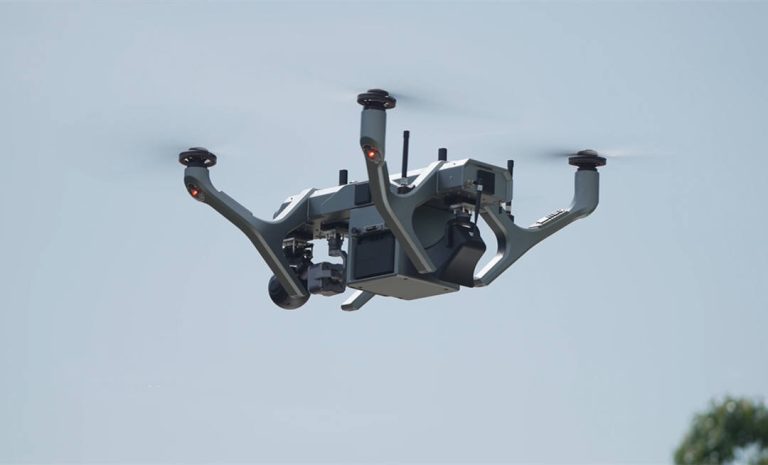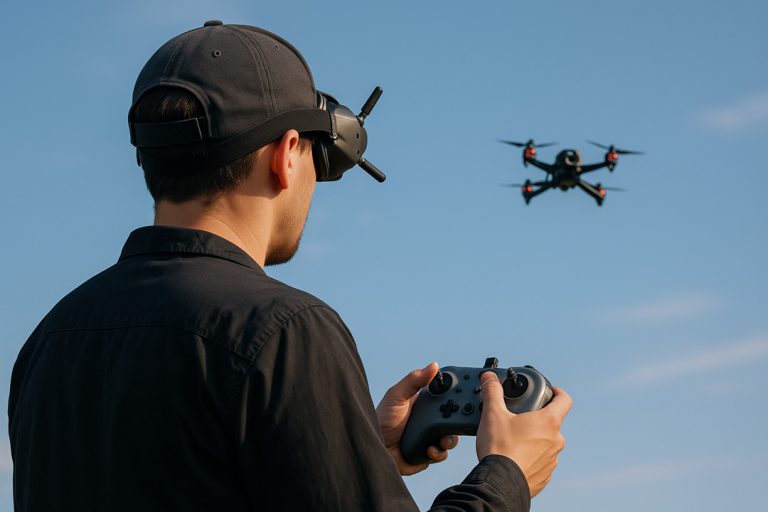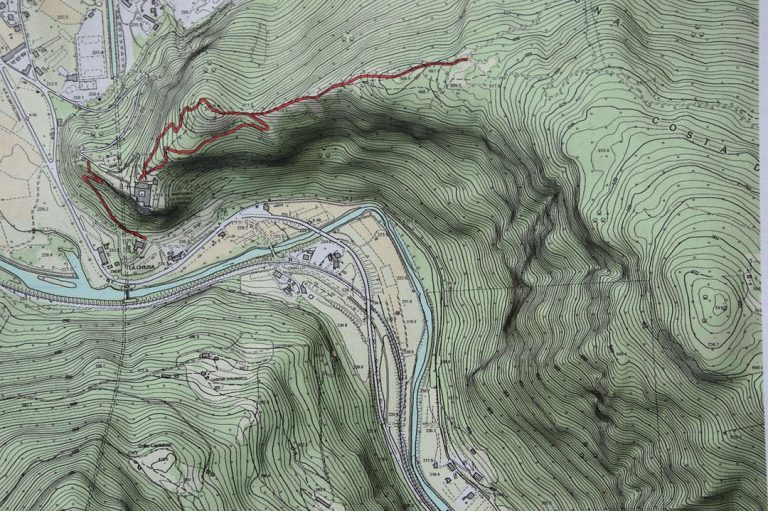How Far Can a Drone Fly? Maximum Ranges and Legal Limits
When purchasing a drone, factors like speed, flight time, and camera quality often take center stage. However, another critical aspect that's frequently overlooked is range—the maximum distance a drone can fly from its controller before losing connection or running out of battery.
While the Federal Aviation Administration (FAA) mandates that drones in the United States be flown within visual line of sight (VLOS), this doesn't necessarily dictate the drone's technical capabilities. Depending on the drone's type, design, and technology, it can theoretically cover tens of meters to thousands of kilometers.
In this comprehensive guide, we'll delve into the factors influencing drone range, from battery life and weight to signal strength and legal restrictions.
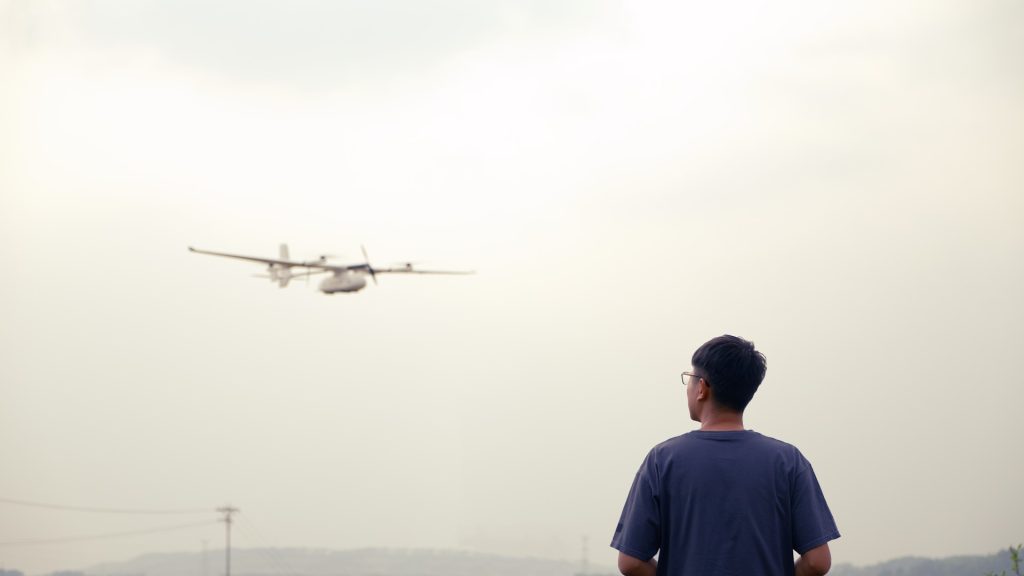
What Determines the Flight Range of a Drone?
A drone’s flight range depends on several key factors, each influencing how far it can travel before needing to return or recharge.
Battery Capacity
The battery is the primary power source for a drone. Drones with larger battery capacities can fly longer, but larger batteries also add weight, which reduces efficiency. Lightweight, high-energy-density batteries are essential for maximizing range.
Size and Weight
A drone's weight directly impacts its range. Heavier drones require more power to stay airborne, limiting how far they can fly. Streamlined, aerodynamic designs help reduce drag and improve flight efficiency, allowing drones to cover more distance.
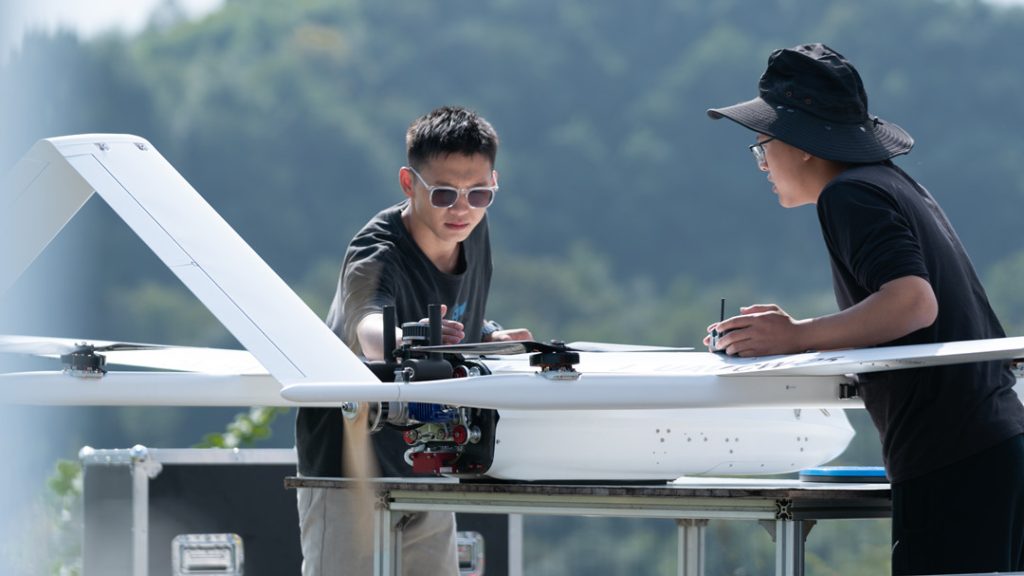
Environmental Conditions
Wind, temperature, and weather play significant roles in drone range. Headwinds can reduce range by forcing the drone to use more energy, while tailwinds extend it. Extreme cold reduces battery efficiency, while high heat can cause overheating, both shortening flight distance.
Motors and Propellers
Efficient motors and propellers help maximize flight range. Brushless motors, for example, use less energy than older models. Similarly, well-designed propellers reduce energy consumption, while damaged or unbalanced ones can limit how far the drone can travel.
Signal Strength
The controller’s signal range affects how far a drone can fly. Obstacles like buildings and trees can interfere with the signal, limiting operational distance. Advanced controllers with stronger signals allow drones to operate farther from the pilot, as long as they maintain communication.
Flying Style
Aggressive flying—like rapid ascents, turns, and high speeds—quickly drains the battery, reducing range. Smooth, steady flight at moderate speeds conserves energy and extends the drone’s operational distance.
Regulatory Limits
In many regions, regulations like the Visual Line of Sight (VLOS) rule restrict drones from flying beyond what the operator can see, usually limiting range to 0.25–0.5 miles. For extended missions, Beyond Visual Line of Sight (BVLOS) operations require special permissions and safety measures.
How Far Can a Drone Fly from Controller?
Technically, drones are capable of flying impressive distances depending on the type. However, the exact range depends on the model and the technology built into both the drone and its controller.
How Far Can a Military Drone Fly?
Military drones are designed for long-range missions and can fly significantly farther than commercial or hobbyist drones. For example, the MQ-9 Reaper can travel up to 1,150 miles (1,850 kilometers) using satellite communication. Tactical drones, which are smaller, typically have ranges of 20 to 50 miles (32 to 80 kilometers), depending on their mission and design.
How Far Can a Police Drone Fly?
Police drones, used for surveillance and public safety, generally have a range of 5 to 9 miles (8 to 15 kilometers). Drones like the JOUAV's CW-15 offer advanced transmission technology that can cover larger urban areas up to 31 miles (50 kilometers) while maintaining a strong signal. In practice, though, the actual range may be shorter in densely populated cities due to interference from buildings and obstacles.
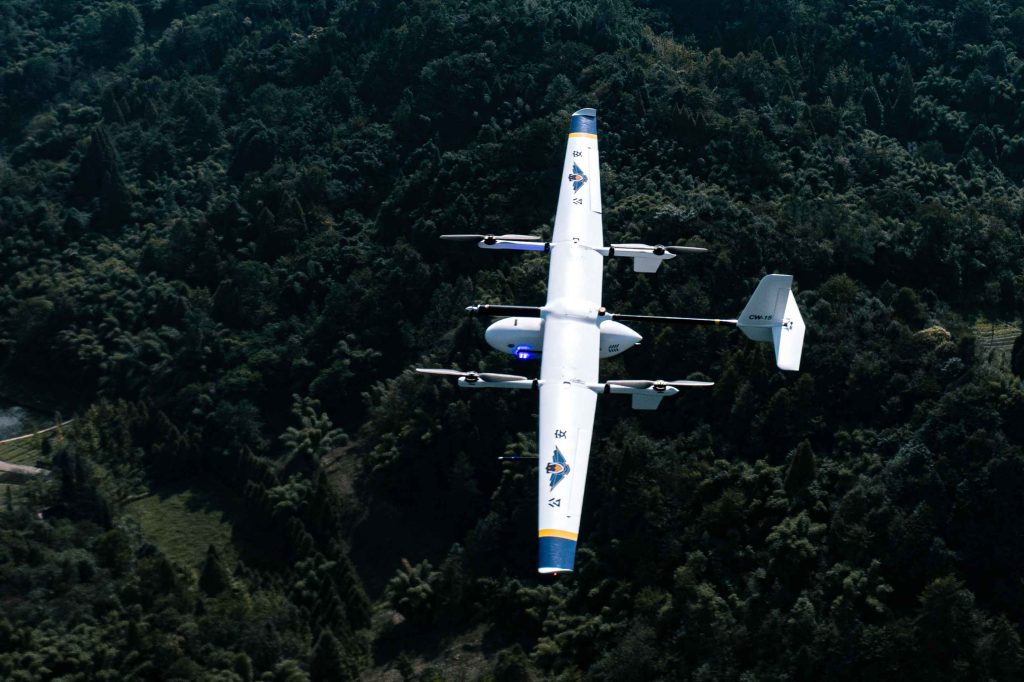
How Far Can a Delivery Drone Fly?
Drones used for deliveries, such as those operated by Amazon and Zipline, have ranged from 10 to 50 miles (16 to 80 kilometers). For instance, Zipline’s medical delivery drones can cover over 50 miles to transport essential supplies in remote areas. Delivery drones typically balance range and payload capacity, allowing them to cover longer distances for commercial use.
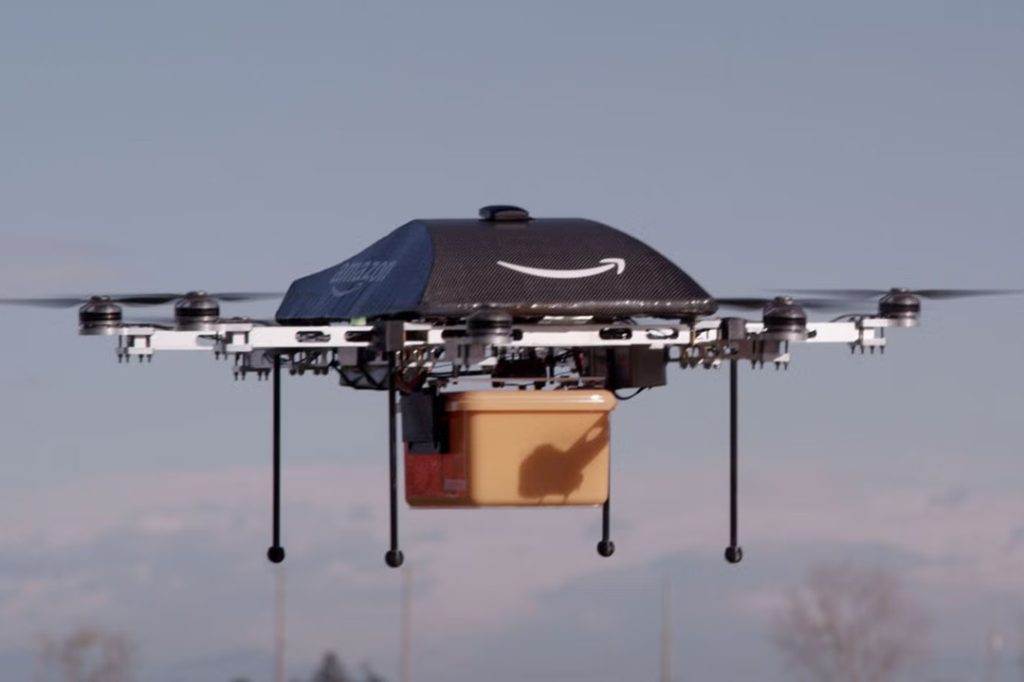
How Far Can a Commercial and Civilian Drone Fly?
Commercial drones, often used for industrial applications like mapping, inspections, or filmmaking, generally have longer ranges. For example, the DJI Inspire 2 can fly up to 7 kilometers (4.3 miles), making it ideal for professional projects. Some high-end commercial drones like the JOUAV's CW-30E may have ranges closer to 124.3 miles (200 kilometers), especially when equipped with stronger transmission systems.
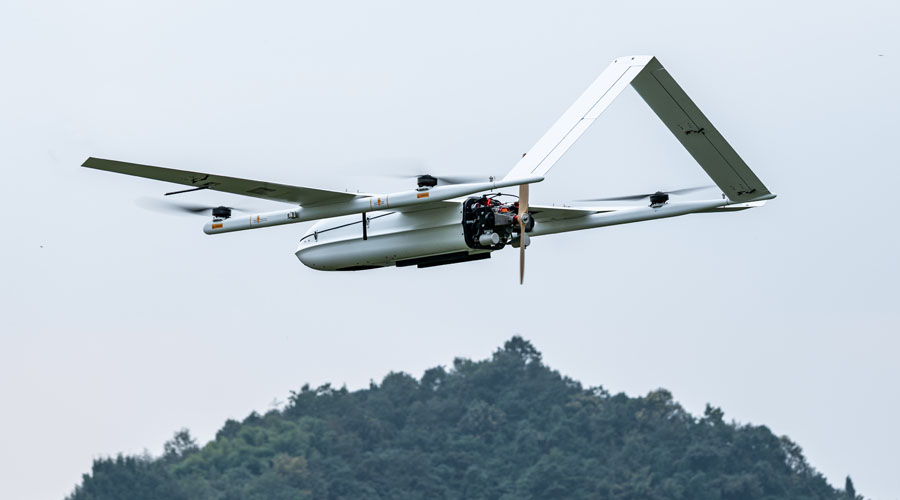
How Far Can an FPV Drone Fly?
First-Person View (FPV) drones, popular for racing or capturing live aerial footage, usually have shorter ranges due to the need for real-time video transmission. Depending on the setup, FPV drones can fly anywhere from 0.5 miles (0.8 kilometers) to 4 miles (6.5 kilometers), though many racers prefer closer ranges to minimize latency in video feedback.
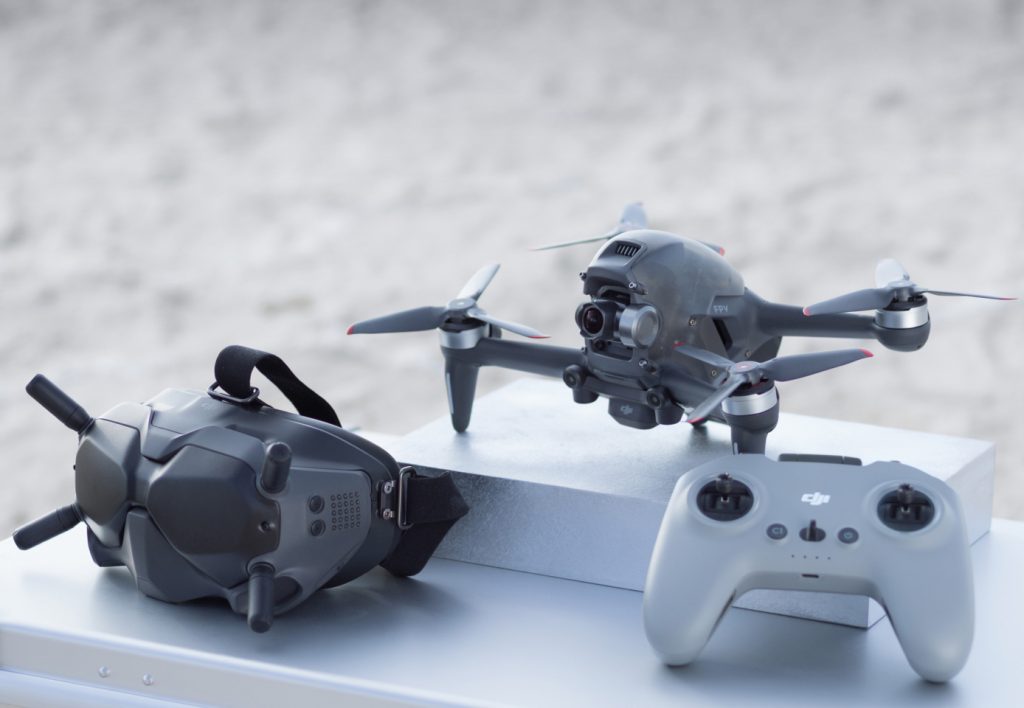
How Far Can a Toy Drone Fly?
Toy drones, designed for beginners and indoor flights, have a minimal range. These drones typically operate within 20 to 300 feet (6 to 90 meters) of the controller. They often use WiFi or Bluetooth for communication, which greatly restricts how far they can fly before losing signal.
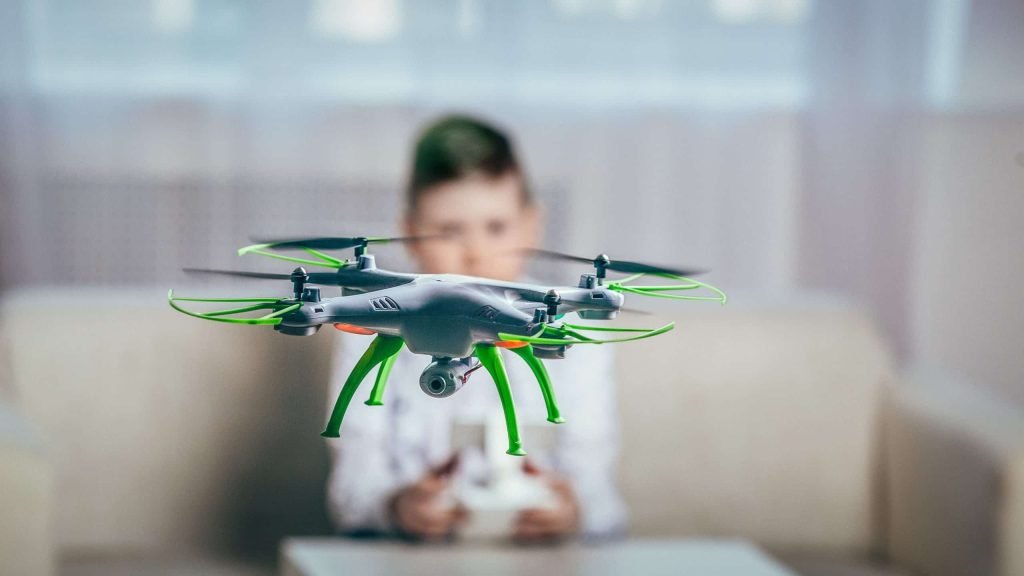
How Far Can a Small and Mini Drone Fly?
Small and mini drones, like the DJI Mini 2, can fly up to 6 miles (10 kilometers) thanks to advanced transmission systems like OcuSync 2.0. These compact drones are popular among hobbyists and casual flyers because they offer a great balance between portability and performance.
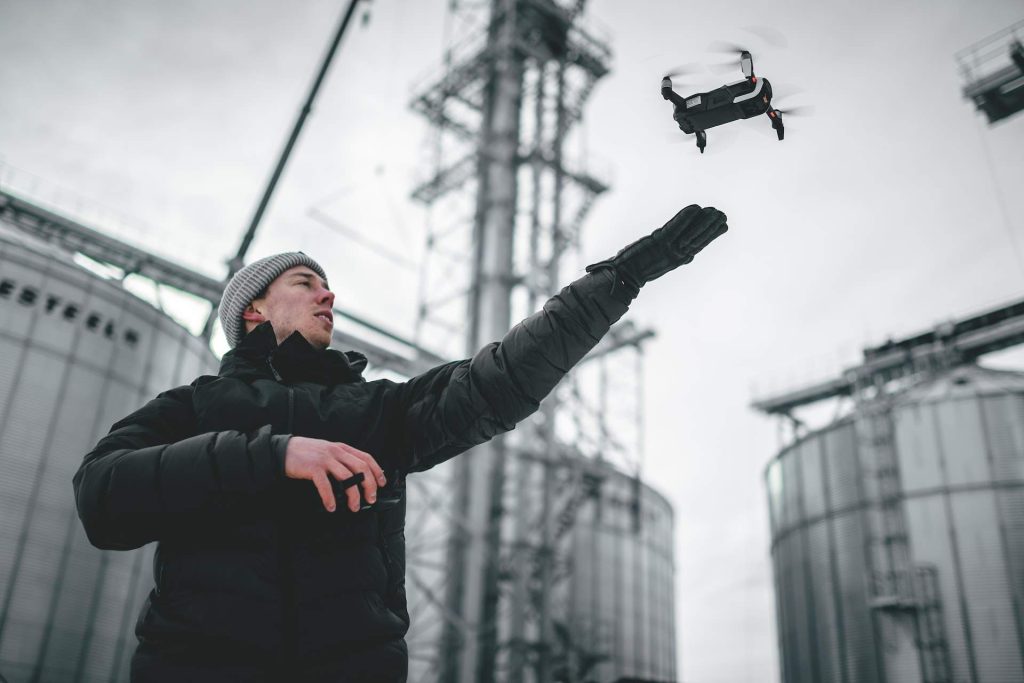
How Far Can a Hobbyist and Personal Drone Fly?
Hobbyist drones, typically used for recreational flying or photography, have a range of about 0.5 to 2 miles (0.8 to 3.2 kilometers). Drones like the DJI Mavic Air 2 are perfect for enthusiasts looking for decent range and performance without crossing into commercial-grade territory.
Drone Range Categories
According to the range, UAVs can be classified into the following range categories:
| Drone range | Flight distance | Flight time | Use |
| Very close-range drones | 5 km | 1 hour | Recreation |
| Close-range drones | Up to 50 km | 1-6 hours | Military surveillance, aerial photography |
| Short-range drones | Up to 150 km | 8-12 hours | Large-scale surveillance, mapping and surveying, utility inspection |
| Mid-range drones | Up to 644 km | 24 hours | Military combat and surveillance |
| Long-range drones | More than 644 km | More than 24 hours | Military surveillance and espionage, weather tracking, geographic mapping |
Popular Drone Range Examples
Here’s a comprehensive overview of several popular drones, detailing their maximum control range and flight time.
| Product | Max Control Range | Max Flight Time |
| JOUAV CW-30E VTOL | 200 km (124.3 miles) | 480 minutes |
| JOUAV CW-15 VTOL | 50 km (31 miles) | 180 minutes |
| Switchblade 600 | 38.6 km (24 miles) | 40 minutes |
| DJI Mavic 3 Pro | 15 km (9.3 miles) | 43 minutes |
| Autel EVO II Pro | 15 km (9.3 miles) | 40 minutes |
| DJI Avatar 2 | 13 km (8 miles) | 23 minutes |
| DJI Mini 2 | 10 km (6.2 miles) | 31 minutes |
| Exo X7 Ranger | 10 km (6.2 miles) | 30 minutes |
| iFlight 2raw Helion 10 | 10 km (6.2 miles) | 26 minutes |
| Parrot Anafi Ai | 9 km (5.6 miles) | 32 minutes |
| DJI Phantom 4 | 7 km (4.3 miles) | 28 minutes |
| Holy Stone HS360S GPS | 3 km (1.9 miles) | 20 minutes |
| Ruko F11GIM2 | 3 km (1.9 miles) | 28 minutes |
| DJI Spark | 2 km (1.2 miles) | 16 minutes |
| Sky Viper Dash Nano | 106.7 meters (0.06 miles) | 8-10 minutes |
As the table above demonstrates, the JOUAV CW-15 and CW-30E are exceptional options for long-range drone applications. Their impressive maximum control ranges and flight times make them ideal for aerial surveillance, search and rescue, and industrial inspections.
How Far Can a Drone Fly Legally?
The question of how far you can legally fly is a complex one, with strict regulations set in place to ensure safety. These rules differ for recreational users and commercial operators under Part 107 of the Federal Aviation Administration (FAA) guidelines, and many of these regulations are mirrored globally.
Recreational Drone Use: Visual Line of Sight (VLOS) Limitations
For recreational drone pilots, the FAA’s regulations mandate that drones must remain within the Visual Line of Sight (VLOS) of the operator or a visual observer. This rule means that you must be able to see your drone with the naked eye, without any aids like binoculars or video feeds from the drone’s camera.
In practical terms, this restricts your drone’s flight range to 0.25 to 0.5 miles under typical conditions. Factors such as the size of the drone and weather conditions, like fog or rain, may reduce this distance even further.
One common misconception is that using a visual observer positioned far from the pilot, often referred to as "daisy chaining," is a legal way to extend the flight range.
However, FAA rules clearly state that the visual observer must be co-located with the pilot and able to communicate directly with them without technological aids such as walkie-talkies or cell phones.
This ensures that both the pilot and the observer have an immediate line of sight of the drone, which is critical for preventing collisions with other aircraft or avoiding ground hazards.
Recreational users are not permitted to fly beyond VLOS under any circumstances, and there is no waiver available for recreational drone flights to extend beyond this range.
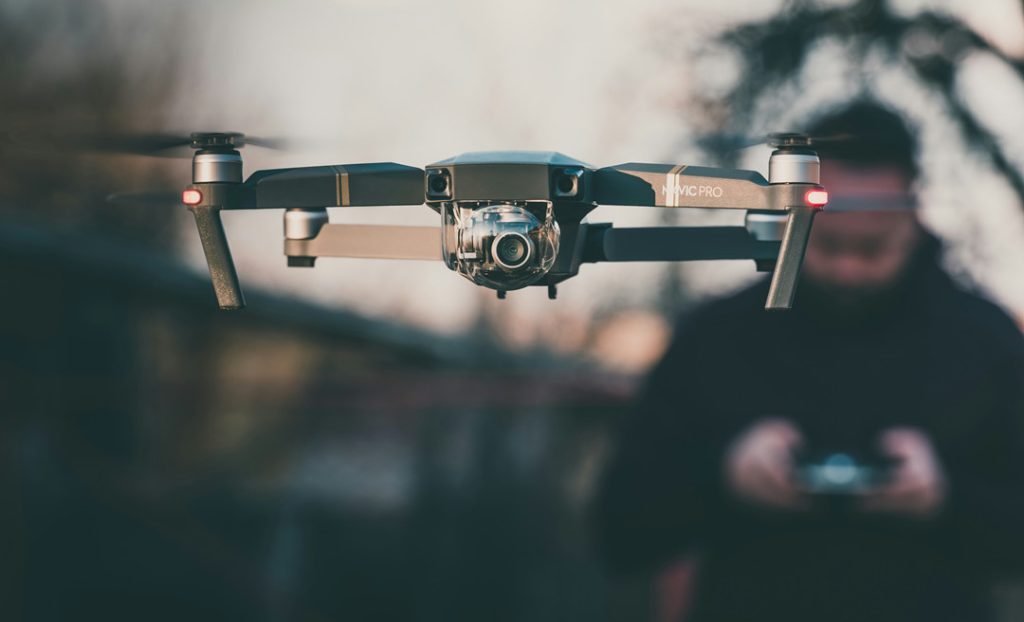
Commercial Drone Use: Part 107 and Beyond Visual Line of Sight (BVLOS) Waivers
Commercial drone pilots operating under Part 107 have slightly different regulations, though they are also bound by the requirement to keep their drones within VLOS. The Part 107 rules allow either the pilot or a visual observer to maintain a line of sight, but they must not use any visual aids beyond corrective lenses. The use of technology like binoculars or long-distance communication devices to extend the operational range is strictly prohibited.
However, for certain commercial operations, such as infrastructure inspections, agriculture monitoring, and package delivery, it’s often necessary to fly drones beyond the operator’s visual range. This is where Beyond Visual Line of Sight (BVLOS) operations come into play. BVLOS flying is not typically allowed under standard Part 107 regulations but is possible through a BVLOS waiver.
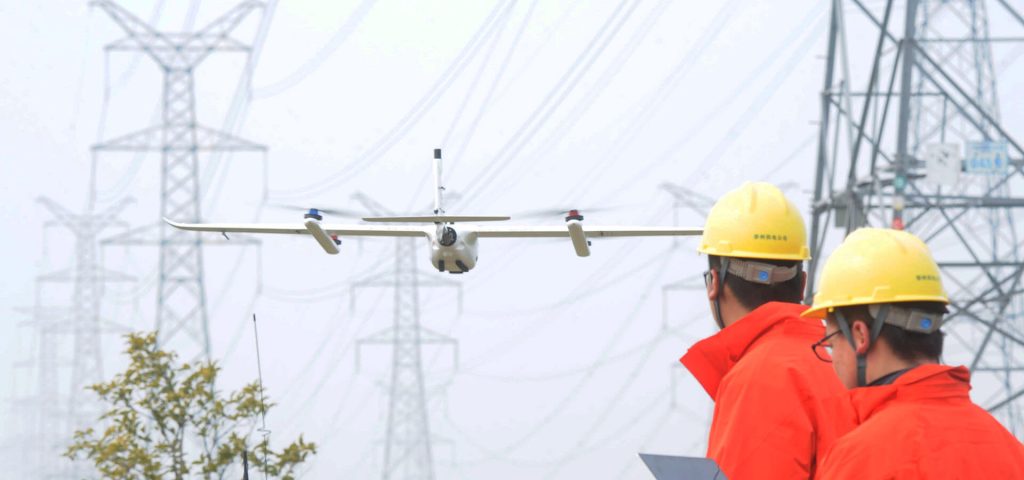
These waivers are difficult to obtain and require a thorough application process, where the FAA assesses the safety protocols, technology, and operational procedures of the drone operator. For a waiver to be granted, the drone must have advanced capabilities, including:
- Advanced navigation systems that ensure the drone can fly safely without direct oversight.
- Robust communication technologies to maintain constant contact with the operator.
- Obstacle avoidance sensors and autonomous capabilities to navigate safely around buildings, trees, and other aircraft.
Even with these technologies, obtaining a BVLOS waiver is rare, as the FAA issues them sparingly due to the inherent risks of flying drones beyond what the pilot can physically see. The process can take months and requires demonstrating a high level of safety and compliance.
International VLOS and BVLOS Regulations
The restrictions imposed by the FAA are not unique to the United States. Many countries around the world, including the UK, Canada, Australia, and the European Union, have adopted similar VLOS regulations, ensuring that drone operators can always maintain control over their aircraft. The priority in all cases is to minimize risks to people on the ground, avoid conflicts with manned aircraft, and ensure safe and efficient airspace use.
BVLOS operations, however, are becoming more widespread internationally. Countries like Canada and the UK have begun developing regulatory frameworks that will allow commercial drone operators to apply for BVLOS operations more easily, especially as drone technology advances. Nevertheless, these operations always involve strict safety assessments and a high level of regulatory scrutiny.
What Happens if You Fly Your Drone out of Range?
When you fly your drone beyond the range of its controller, the outcome can vary depending on the type of drone, its built-in technology, and safety features.
Loss of Signal and Potential Crash
For older or less sophisticated drones, losing connection with the controller can mean immediate trouble. Without advanced fail-safes, these drones may simply crash. If you’re using a cheaper or toy drone, here’s what could happen:
- Sudden Drop: Without a signal, the drone may lose power or control and fall straight to the ground.
- Crash into Obstacles: Without any obstacle detection or avoidance systems, the drone could collide with trees, buildings, or anything else in its flight path.
This is especially true for basic models that lack modern safety features. These drones don’t have the technology to recover when they lose communication, so flying out of range often leads to a crash.
Return to Home (RTH) Feature
Most modern drones, especially higher-end consumer or commercial models, are equipped with a Return to Home (RTH) feature. This is a safety mechanism designed to bring the drone back to its starting point if it loses connection with the controller. Here's how it typically works:
- Automatic Return: When the drone loses contact, the RTH feature kicks in automatically. It uses GPS to navigate back to the location where it took off.
- Obstacle Avoidance: Before heading back, most drones will climb to a preset altitude to avoid obstacles like trees or buildings.
- Autonomous Landing: Once the drone reaches its home point, it will land by itself.
You can also trigger the RTH function manually when you notice your drone is getting close to its maximum range or if it encounters obstacles. A simple button press on your controller or app can bring the drone back safely before the signal is lost.
Manual Recovery
Sometimes the RTH feature may not be available or may fail, making manual recovery necessary. This is when you, the pilot, need to take control and guide the drone back using your knowledge of the controls and visual line-of-sight. Here’s what you can do:
- Keep Visual Contact: If you can still see your drone, use its orientation lights to figure out which direction it’s facing and navigate it back manually.
- Use a Smartphone App: Some drones allow you to control them via an app on your phone. If you lose the signal with the controller, you may still be able to recover the drone through the app as long as the connection to your phone remains intact.
Failsafe Hover or Controlled Landing
In more advanced drones, when the signal is lost and RTH isn’t an option, the drone might enter a failsafe mode. In this mode, the drone will either hover in place or perform a controlled landing, depending on its programming and the situation.
- Hover in Place: The drone will stay in its current position, hovering in the air while it waits to reconnect with the controller. If you move closer, you can re-establish the connection and take control again.
- Controlled Descent: If the battery is low or hovering isn’t safe, the drone will land itself in its current location. This minimizes the risk of a crash but could result in the drone landing in an inconvenient or hard-to-reach place.
Risks and Considerations
Several factors come into play when your drone flies out of range, and being aware of these can help prevent problems:
- Battery Life: Always keep an eye on your drone’s battery level. If the battery is too low when the signal is lost, the drone might not have enough power to make it back home, resulting in a forced landing or potential loss.
- Flying in Sport Mode: If your drone is in sport mode or another high-performance setting, certain fail-safes like RTH may be deactivated. Be mindful of this and be prepared to act quickly if needed.
- Environmental Obstacles: The range at which your drone loses signal can vary based on its surroundings. Buildings, trees, and even weather conditions can block signals, causing your drone to lose connection sooner than expected.
How Are Long Range Drones Controlled?
Controlling long-range drones involves several key technologies and strategies to maintain a stable connection and effective operation over extended distances.
Communication Systems
Long-range drones primarily rely on advanced communication systems to stay connected with their operators. Radio frequency (RF) communication is commonly used, operating on frequency bands like 2.4 GHz or 5.8 GHz, which provide stable connections over long distances.
Some high-end drones also use cellular networks, such as 4G or 5G, to extend their communication range.
For remote areas where RF and cellular signals might be weak, satellite communication offers a robust solution, relaying signals between the drone and its operator.
Navigation and Autonomy
GPS is crucial for long-range drones, enabling them to follow pre-set flight paths and return to the starting point if needed. This is particularly important for features like Return to Home (RTH), which ensures the drone can safely return if it loses connection.
Additionally, autonomous flight modes, such as waypoint navigation and obstacle avoidance, allow drones to operate independently and navigate complex environments without constant input from the operator.
Data Transmission
High-bandwidth communication links are used to transmit data, including high-resolution video, from the drone to the operator.
Some drones employ relay systems, such as airborne or ground-based relays, to extend their communication range further, ensuring reliable data transfer even in challenging conditions.
Control Interfaces and Software
Operators control long-range drones using Ground Control Stations (GCS) or mobile apps, which provide real-time monitoring and control. These interfaces allow for mission planning, telemetry monitoring, and system adjustments.
Features such as real-time mapping and waypoint planning are integral for managing long-range flights effectively.
Common Uses of Long Range Drones
Long-range drones are increasingly utilized across various sectors due to their ability to cover extensive areas and perform complex tasks from significant distances. Here’s a detailed look at their common uses:
Surveillance and Monitoring
Long-range drones are extensively used for surveillance and monitoring purposes. They are deployed in security operations to patrol large areas, such as borders, critical infrastructure, and large public events. Their extended range allows for continuous monitoring and the ability to cover vast territories without the need for frequent repositioning.
Equipped with high-resolution cameras and thermal imaging, these drones can detect and identify potential security threats from afar, providing real-time data to security personnel.
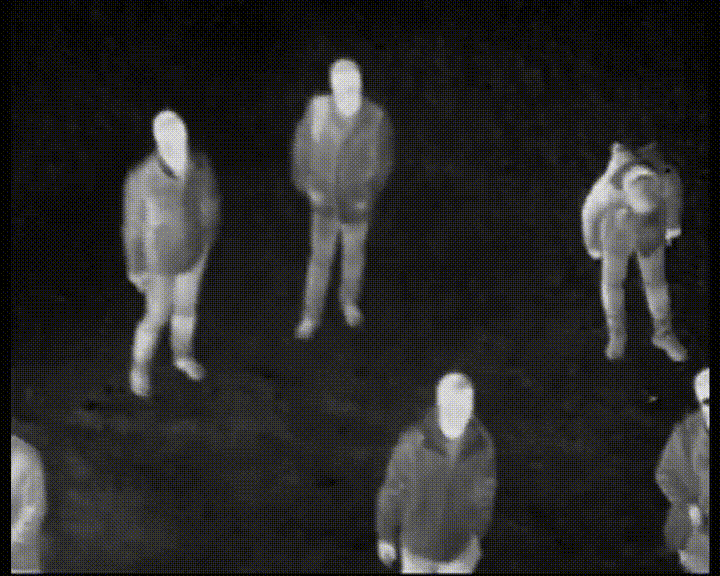
Search and Rescue Operations
In search and rescue missions, long-range drones play a crucial role by providing aerial perspectives over large, often inaccessible areas. They are used to locate missing persons in remote or rugged terrain where ground access might be challenging.
Drones equipped with thermal imaging cameras can detect heat signatures, improving the chances of finding individuals in distress. Their ability to cover expansive areas quickly and relay live video feeds significantly enhances the efficiency and effectiveness of rescue operations.
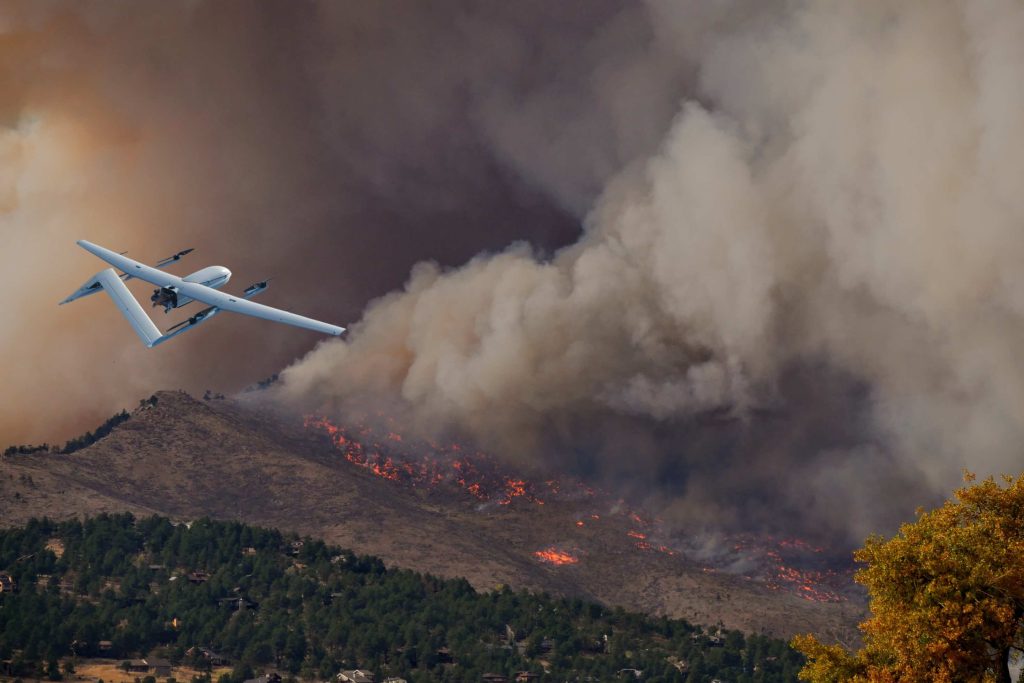
Agricultural Monitoring
Agriculture benefits greatly from the use of long-range drones for crop monitoring and management. These drones can survey large agricultural fields, providing valuable data on crop health, soil conditions, and pest infestations.
By covering extensive areas, they help farmers make informed decisions about irrigation, fertilization, and pest control, leading to improved crop yields and efficient resource use. Their ability to collect high-resolution imagery and multispectral data allows for detailed analysis and precise farming practices.
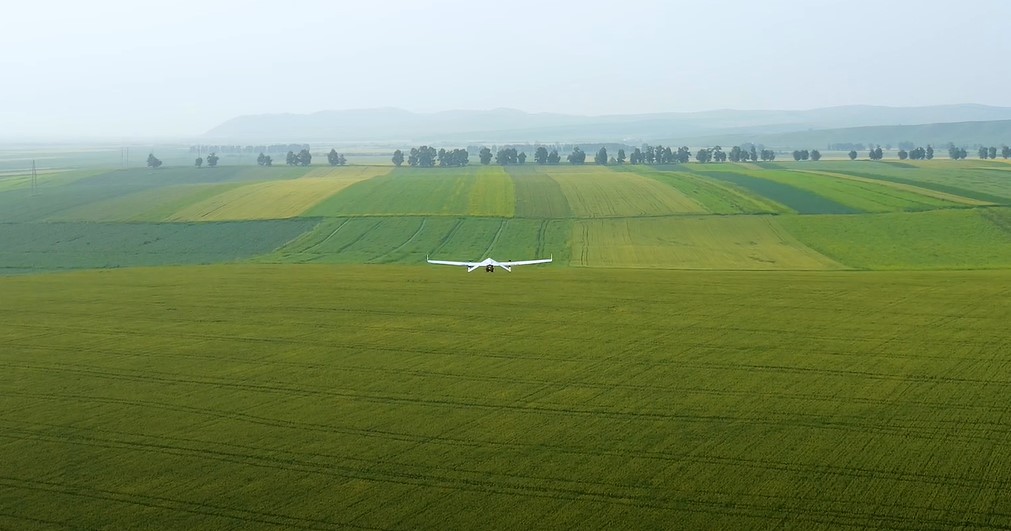
Infrastructure Inspection
Long-range drones are instrumental in inspecting and maintaining infrastructure such as power lines, pipelines, bridges, and communication towers.
They can cover long stretches of infrastructure quickly, capturing detailed images and videos that help identify damage, wear, and potential safety issues. This capability is particularly useful for inspecting hard-to-reach areas and reducing the need for costly and hazardous manual inspections.
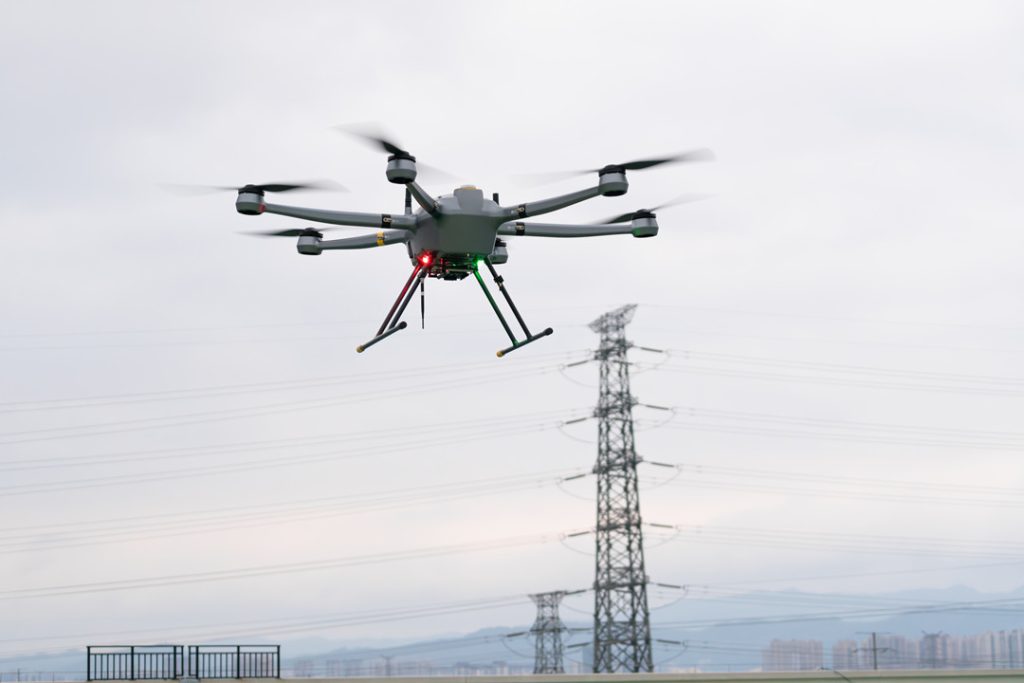
Environmental Monitoring
In environmental conservation, long-range drones are used to monitor natural habitats, track wildlife movements, and assess the impact of environmental changes. They can cover extensive areas of forests, wetlands, and oceans, providing data that helps in the management and protection of ecosystems.
Drones equipped with specialized sensors can also monitor pollution levels, deforestation, and other environmental changes, supporting conservation efforts and policy-making.
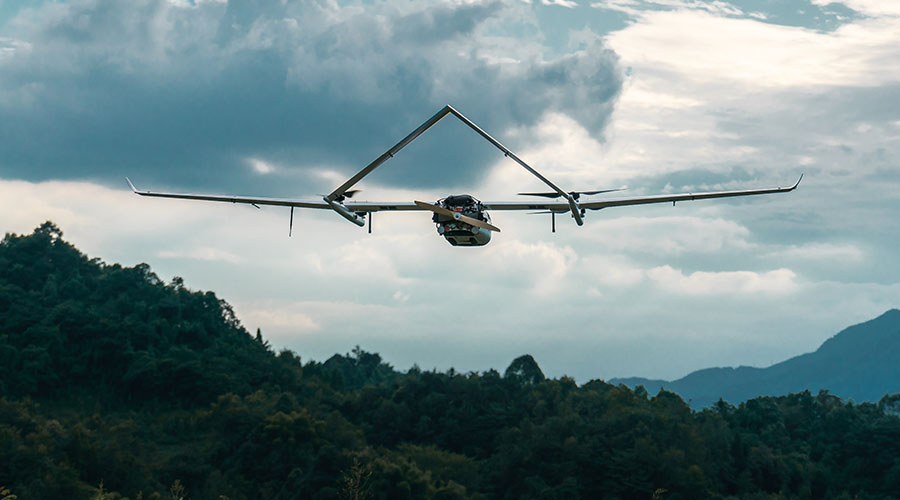
Disaster Response and Management
During natural disasters like floods, earthquakes, and wildfires, long-range drones provide crucial situational awareness. They can quickly assess damage, map affected areas, and identify hazards, facilitating more effective disaster response and management.
Their ability to operate in challenging conditions and relay real-time data helps emergency responders make informed decisions and coordinate rescue and relief efforts more efficiently.
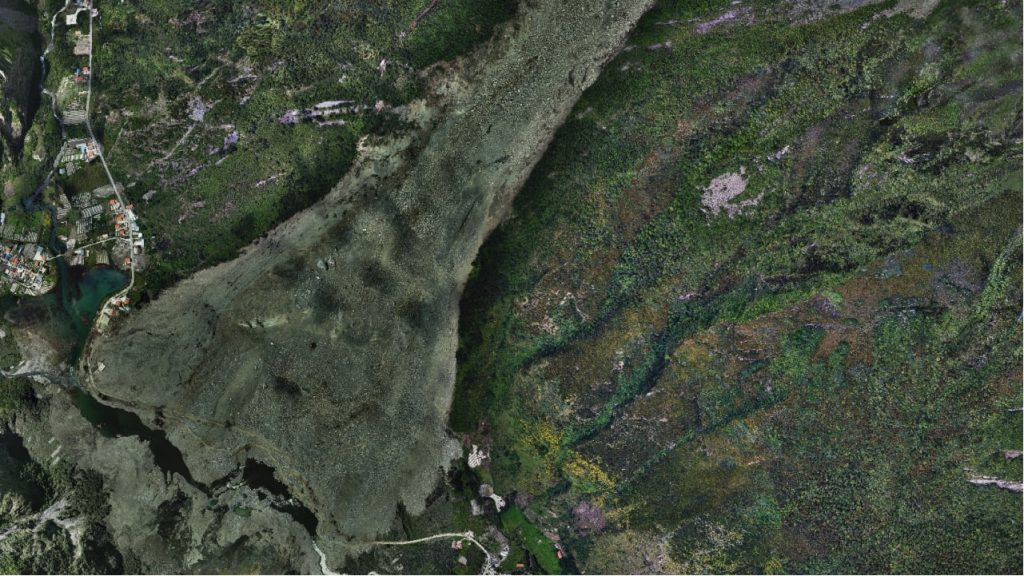
Delivery Services
Long-range drones are increasingly being explored for package delivery services, particularly in remote or underserved areas. They offer a way to quickly transport goods over long distances, bypassing road traffic and logistical constraints.
Companies are developing and testing drones capable of carrying parcels over several miles, aiming to improve delivery times and provide access to goods in locations where traditional delivery methods are less feasible.
How to Extend Your Drone Range?
If you’re looking to push your drone’s range further, there are plenty of practical steps you can take.
Optimize Antenna Placement and Selection
One of the most straightforward ways to boost your drone’s range is by optimizing the antennas:
- Antenna Positioning: Proper antenna placement on both the drone and the controller is crucial. Position the antennas vertically or in an orientation that maintains an unobstructed line of sight between the controller and the drone. This simple adjustment can significantly improve signal strength and stability, allowing you to fly further without losing connection.
- Antenna Type and Gain: Upgrading to high-gain antennas can focus the signal more efficiently. High-gain antennas transmit energy in a more concentrated direction, reducing signal loss and extending the drone’s range. Choosing antennas with better materials and design can further improve signal quality.
Reduce Signal Interference
Signal interference is a major factor in reducing drone range, but it can be minimized by taking a few precautions:
- Fly at Higher Altitudes: Flying your drone at a higher altitude can help reduce signal interference from Wi-Fi networks, power lines, and other sources of radio frequency (RF) noise. The fewer obstacles between your controller and the drone, the stronger and more stable the signal will be.
- Avoid Physical Obstructions: Buildings, trees, and other large structures can block the signal between the drone and the controller. Whenever possible, fly in open areas without obstructions to maximize your drone’s range and avoid sudden signal loss.
Modify Drone Settings
Tuning your drone’s settings can also help improve its operational range:
- Firmware Updates: Manufacturers regularly release firmware updates to improve performance, and these often include optimizations for communication protocols. Keeping your drone’s firmware up-to-date ensures that it uses the latest features and improvements for signal strength and range.
- Optimize Transmission Systems: Some drones allow you to adjust transmission settings, such as frequency bands or signal strength. Switching to a less congested frequency, such as 5.8GHz, can help reduce interference and extend the range of your drone’s communication system.
Use Range Extenders or Signal Boosters
Range extenders or signal boosters can significantly increase the communication range between your drone and its controller:
- Signal Boosters: These devices amplify the signal sent between the controller and the drone, allowing for greater distances without losing connection. Signal boosters can be purchased as add-ons or DIY solutions, making them an effective and relatively affordable way to extend your drone’s range.
- DIY Boosters: For those looking for a cost-effective approach, creating your signal booster is an option. There are various guides online for constructing DIY boosters, using simple materials to focus and amplify your controller’s signal.
Consider UAV Relay Communication Systems
For professional operations or missions where extended range is critical, UAV relay communication systems can provide the most robust solution. These systems transform drones into communication relays, allowing them to cover vast distances and operate in challenging environments. Here are some cutting-edge options:
- Airborne Relay Communication: Drones equipped with relay communication devices can serve as flying signal boosters, providing temporary communication networks in remote or disaster-stricken areas. These airborne platforms can act as mobile cell towers, extending the drone’s communication range well beyond standard limits.
- Ground Base Station Network: Using ground stations that relay signals between multiple drones can form a network, expanding your drone's operational area. This method is particularly useful for large-scale operations where communication over long distances is essential.
- Cellular and Satellite Communication: Advanced drones, like the JOUAV CW-15 and CW-80E, can leverage cellular networks or satellite communications for real-time control and data transmission over vast distances. These systems ensure a stable connection even in remote areas, significantly extending the drone’s operational range.
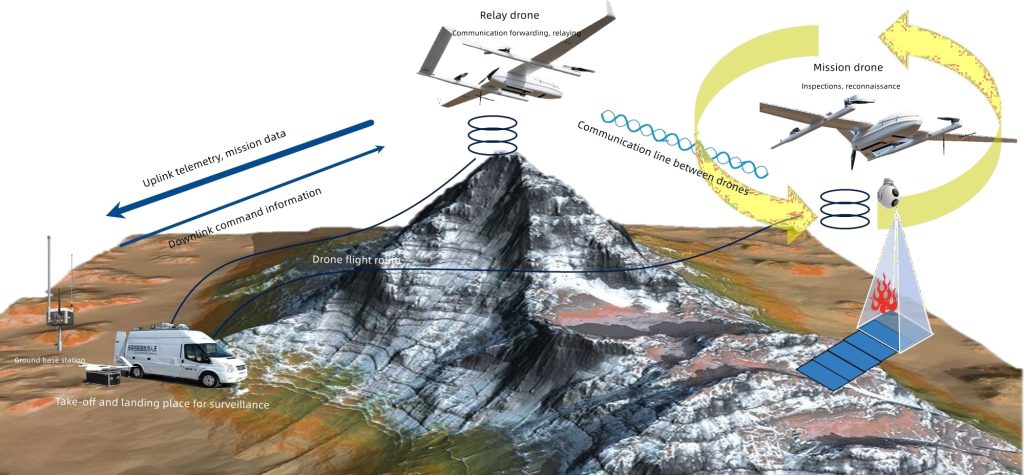
Be Mindful of Environmental Conditions
Environmental factors, such as weather and terrain, can have a significant impact on your drone’s range. Moisture in the air, like fog or rain, can degrade signal quality—see if you can fly in the rain. Flying on clear days will reduce this type of interference and improve your overall range. Wind conditions can also affect stability, so always fly in optimal weather to ensure a longer, safer flight.
Upgrade Software and Hardware
For advanced users looking for a long-term solution, upgrading both software and hardware can offer significant improvements in the range:
- Software Upgrades: Always keep your drone’s software up-to-date. Many manufacturers release updates that improve connectivity, flight stability, and even enhance range.
- Hardware Modifications: Modifying or upgrading your drone’s internal components, such as antennas or signal amplifiers, can give it an extended range. These modifications, however, should be done carefully to avoid damaging the drone’s internal systems or voiding warranties.
FAQ
What is the Average Range of a Drone?
The average range of a drone can vary from 1 kilometer (0.6 miles) for basic consumer models to over 30 kilometers (18 miles) for advanced commercial drones. However, most hobbyist and prosumer drones typically offer ranges between 5 and 12 kilometers (3 to 7.5 miles), depending on the model and environmental factors.
Which Drone Has the Longest Range?
Military drones often have the longest range, thanks to powerful transmitters and advanced technology. These drones can fly thousands of miles, enabling them to conduct surveillance and strike missions in remote locations. Some examples of drones with long ranges include the MQ-1 Predator, MQ-9 Reaper, and Global Hawk.
How Far Can a DJI Drone Fly?
DJI drones offer impressive flight ranges, depending on the model. The DJI Matrice 300 RTK and Mavic 3 can fly up to 15 kilometers, while the DJI Mini 3 Pro reaches 12 kilometers. The Phantom 4 Pro V2.0 covers 8 kilometers, and the DJI FPV flies as far as 10 kilometers.
How Far Can You Fly a Drone from an Airport?
Flying a drone near airports requires adherence to specific regulations, particularly in the United States, where the FAA sets clear guidelines. The distance you can operate from an airport depends on the type of airspace.
In controlled airspace (Classes B, C, D, and E), you need FAA authorization to fly within 5 miles (about 8 kilometers) of an airport. This is to prevent interference with manned aircraft. You can obtain this authorization through the FAA's Low Altitude Authorization and Notification Capability (LAANC) system, which allows for real-time processing of requests.
In uncontrolled airspace (Class G), there are no specific distance restrictions, but operators must still fly responsibly and yield to manned aircraft. While FAA authorization isn’t required in these areas, it’s good practice to notify airport management of your plans.
Always check local regulations, as they can differ by country. Tools like the FAA's B4UFLY app are helpful for verifying airspace restrictions and ensuring compliance.



